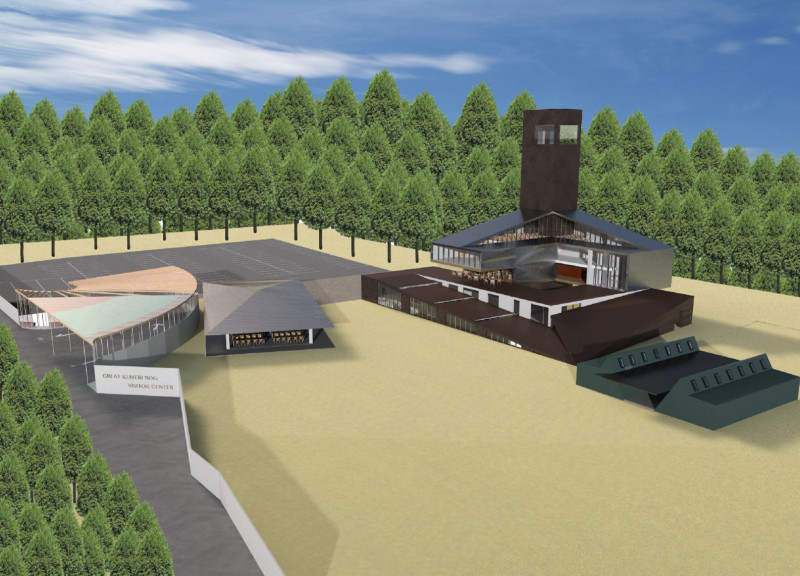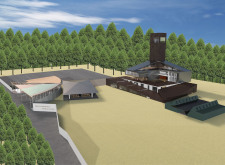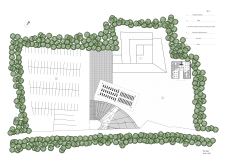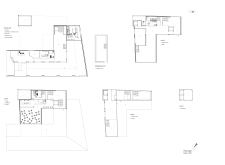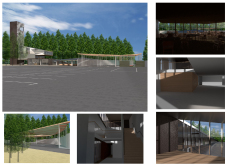5 key facts about this project
At its core, the Great Kilmere Bog Visitor Center is an invitation for exploration, connection, and education. The center provides essential services including visitor reception, exhibition spaces, a café, and interactive areas designed to engage guests of all ages. Emphasizing a seamless interaction with the environment, the design encourages visitors to immerse themselves in both the architecture and the surrounding natural beauty.
The architecture exhibits a strong, intentional interplay between indoor and outdoor spaces, with extensive use of glass allowing ample natural light to permeate the interiors. This design choice fosters an inviting atmosphere and views of the bog, removing barriers and inviting the environment into the visitor's experience. The integration of outdoor spaces, such as a kitchen counter and seating area, as well as camping facilities, extends the opportunities for visitors to engage more deeply with the site, reinforcing the visitor center's role as a community gathering place.
The project’s material palette has been carefully curated to evoke a sense of warmth and connection to the natural context. Key materials such as wood, glass, concrete, and steel have been selected not only for their functional properties but also for their aesthetic qualities. Wood serves to bring warmth and a natural feel to the spaces, while glass elements allow for transparency and a connection to the external environment. Concrete provides durability and stability, underpinning the various architectural elements that support the center's functionality. Steel components add structural integrity and a contemporary feel, helping to merge old and new design ideas.
The unique design approaches adopted in this project include an emphasis on sustainability and community integration. Environmental responsiveness is evident through the strategic orientation of the building and the choice of eco-friendly materials, which collectively aim to minimize ecological impact. The layout encourages visitor flow and interaction, taking advantage of the site’s natural attributes. The inclusion of gathering spaces acts not just as functional areas but as invitations for social connection among visitors.
A particular strength of the Great Kilmere Bog Visitor Center lies in its ability to blend architectural innovation with ecological sensibility. The design goes beyond merely providing a structure; it creates a place that encourages learning and appreciation of the bog's rich biodiversity. Visitors are invited to explore various exhibition areas that elucidate the complexities of the ecosystem, while the observation points offer panoramic views, enhancing the overall experience.
This project embodies a contemporary approach to architecture that prioritizes sustainability, community engagement, and high-quality design, showcasing how buildings can respect and enhance their surroundings. As you explore the project presentation, consider delving into architectural plans, sectional views, and detailed designs. Each element showcases the thoughtful decisions made throughout the design process, revealing the myriad ways architecture can connect people to nature and each other.


